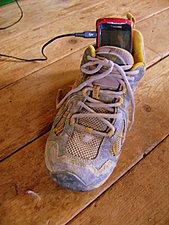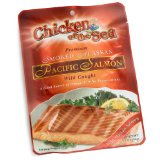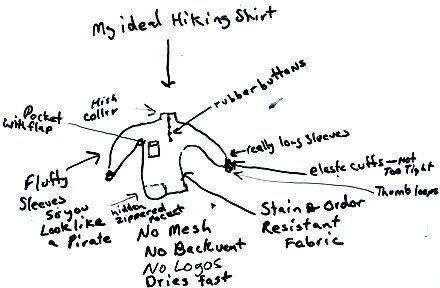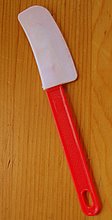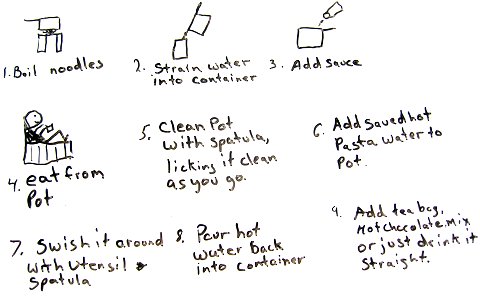 I have an inspiring, fun to look at book called Home work—Handbuilt shelter. It has lots of pictures and diagrams of little, beautiful, and cheap homemade homes.
I have an inspiring, fun to look at book called Home work—Handbuilt shelter. It has lots of pictures and diagrams of little, beautiful, and cheap homemade homes.
One of the articles in it, I thought might be of particular interest to some readers, is called “Perpetual Camping.” It’s about a newsletter called Dwelling Portably. Dwelling Portably is written by people who find some unused land and dwell there for awhile or otherwise dwell portably. Doers report on what works and doesn’t, ask questions, and offer advice.
The people who produce it say:
While quite young, Bert and I decided (separately, before we even met) that buying property was foolish. You can’t really own land;the government owns it and can kick you off any time you do something that any of dozens of government agencies disapprove of .
We also noticed that much land, especially in the west was not used or was used infrequently. That inspired us to become perpetual campers: living in a place while it was desirable; moving on when conditions changed.
Issues vary: some have much about vehicular dwellings and little about backpacables or wickiups. Or vice versa. So, for a broad sampling, order several back issues.
Bert and I have built portable dwellings that are as comfortable as houses. In some ways they are more convenient, because they are small and well insulated, our body heat keeps them warm during winters—avoiding the labor, mess, pollution, and hazard of a heating stove.
Dwelling Portably is $1 dollar an issue. add .50 if sending check or M.O. for less then 6 dollars. (Their prices encourage you to order many back issues) 1/$1; 6/$5; 13/$10; 30/$20 Dwelling Portably, POB 190-hwk, Philomath, OR 97370
Or order online from Microcosm Publishing (Thanks, Pig Monkey, for the link)
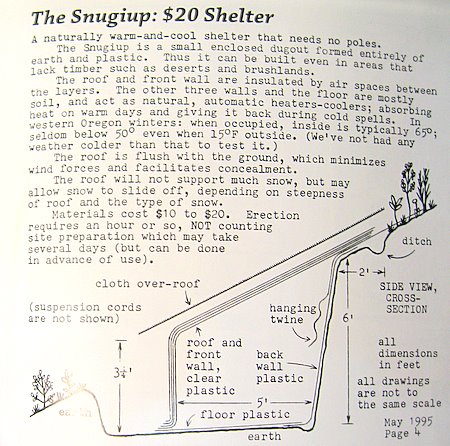
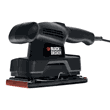 I got another e-mail from Pinball. He is busy plowing the callouses off his feet, after his CDT(Continental Divide Trail) hike, with his Black and Decker power sander. Key, he says, is using really coarse sandpaper.
I got another e-mail from Pinball. He is busy plowing the callouses off his feet, after his CDT(Continental Divide Trail) hike, with his Black and Decker power sander. Key, he says, is using really coarse sandpaper.


